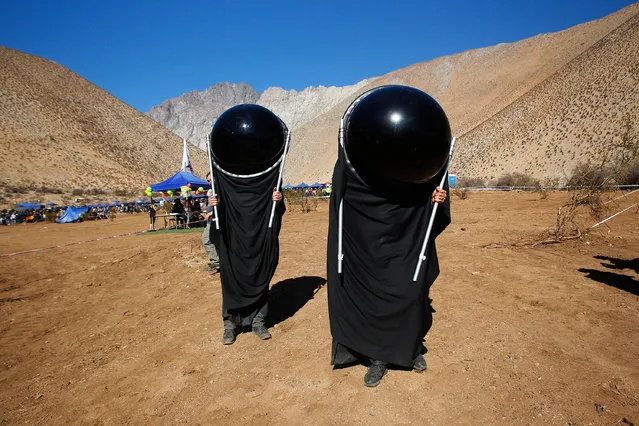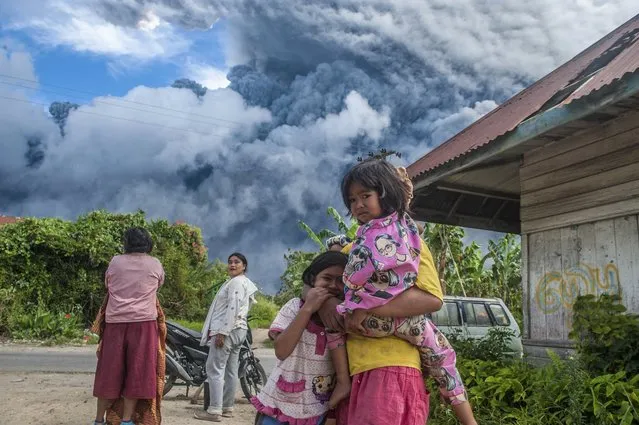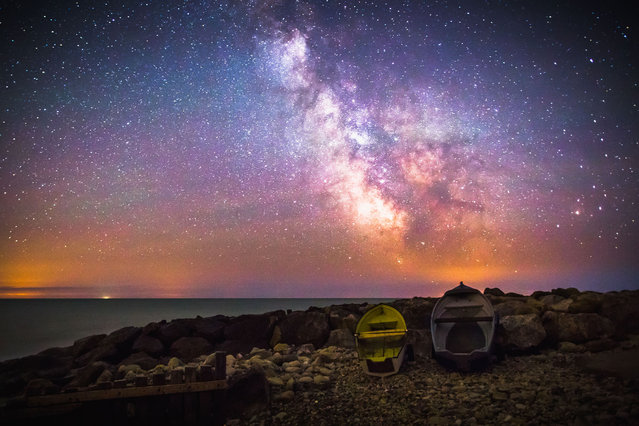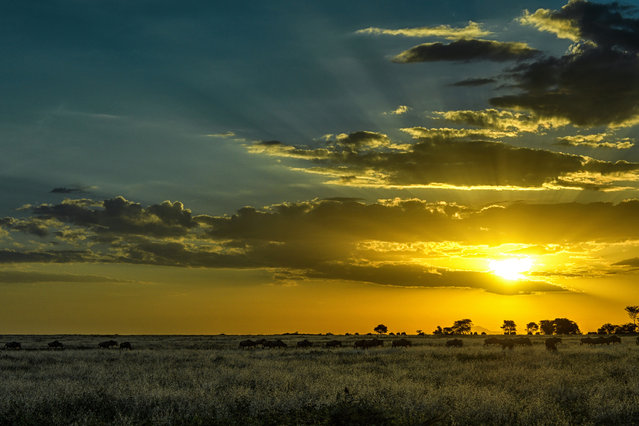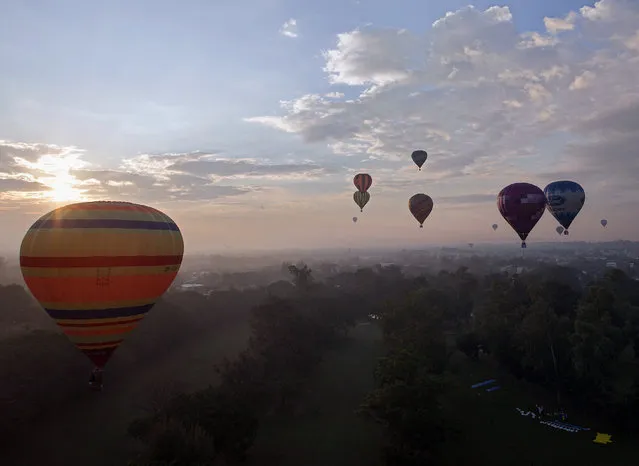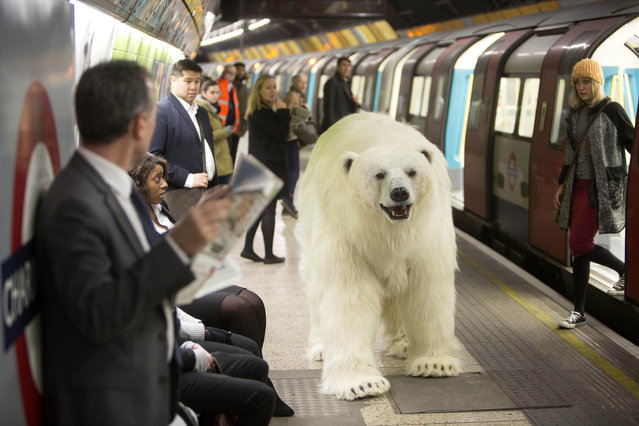
A member of the wingsuit flyers duo, known as the Soul Flyers, is seen in mid-air as he catches up and flies into the open door of Pilatus Porter plane, piloted by Philippe Bouvier, after B.A.S.E. jumping off the Jungfrau mountain, 4158 meters, in Lauterbrunnen, Switzerland, October 13, 2017. French athletes Fred Fugen and Vince Reffet had 2.45 minutes and a free fall distance of 3200 meters to complete their project “Door In The Sky”, coordinated by Yves Rossy know as the “Jetman”. (Photo by Thibault Gachet/Reuters)
30 Nov 2017 08:39:00,post received
0 comments

